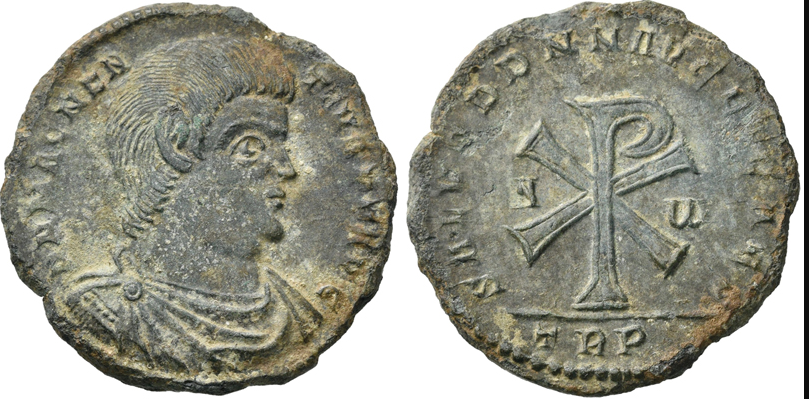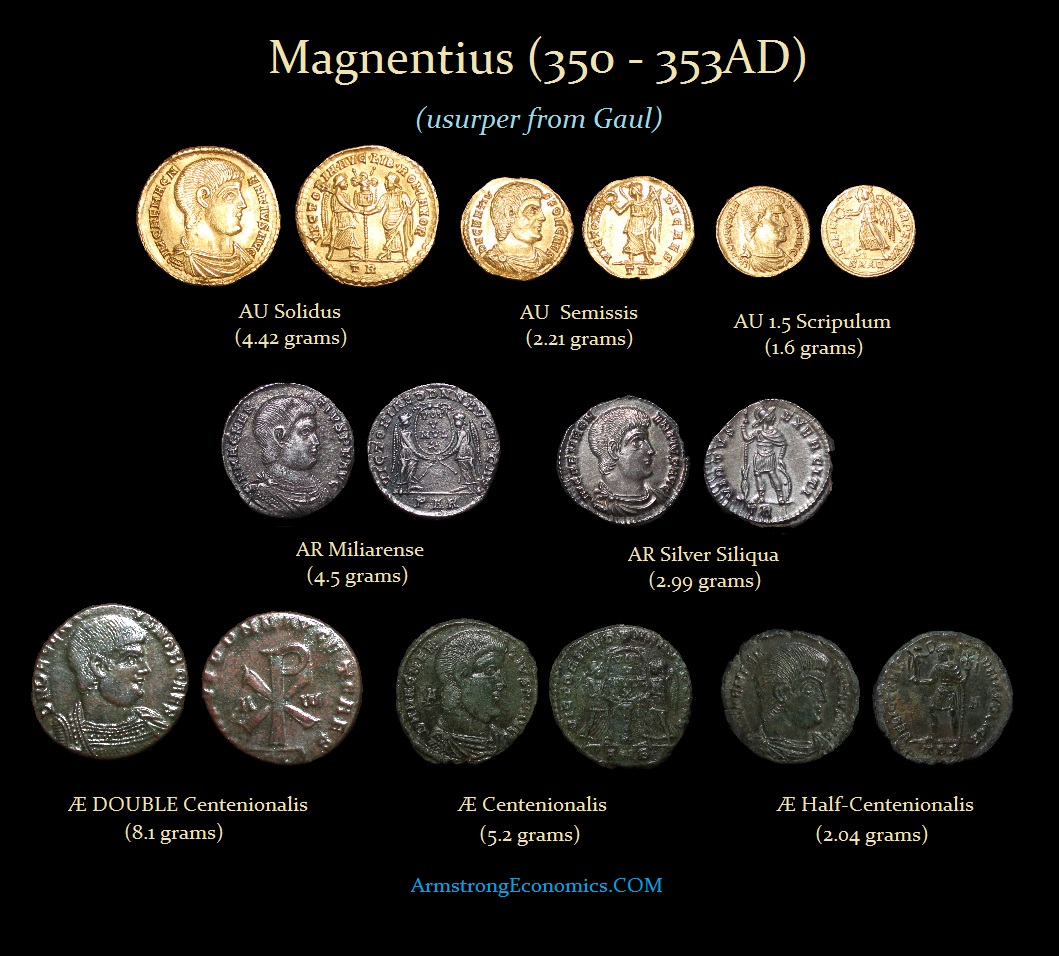Magnentius
350-353 AD
Usurper in Gaul
Flavius Magnus Magnentius was a general of barbarian descent. Magnentius led a revolt against the Emperor Constans in the West at Augustodunum (Autun), where he was joined by the Roman legions of most of the Western provinces. Because of his extreme unpopularity, Emperor Constans found himself without support and attempted to flee to Spain. Nonetheless, Constans was captured and executed near the fortress of Helene at the foot of the Pyrenees. Magnentius then turned to Rome, where Flavius Nepotian, a nephew of Constantine the Great, had proclaimed himself to be Emperor after hearing of Constans’ death. But after a reign in Rome of a mere 28 days, Nepotian fell into the hands of Magnentius’ soldiers and was executed.
Magnentius then turned to the East. He had hoped to obtain recognition from Constantius II, and his coinage reflected this to some extent by portraying himself bare-headed without the traditional diadem. Nonetheless, Constantius II refused to recognize Magnentius as the legal ruler of the West. Disappointed by his failure to gain recognition, Magnentius elevated his brother Decentius to the rank of Caesar in 351. After some initial success, Magnentius gradually lost support for his cause when the legions of Illyrian proclaimed their general, Vetranio, Emperor. Vetranio swore his loyalty to Constantius II and merely sought to keep Magnentius occupied until Constantius II could arrive to take command.
Constantius II eventually arrived later that year and marched against Magnentius, inflicting a significant defeat upon his legions in September 351 AD. Eventually, Magnentius suffered a disastrous loss at Mons Seleucus in Gaul during August 353 AD, following which he committed suicide. His brother, Decentius, upon hearing of his brother’s defeat, also committed suicide.
Monetary System
NOTE: An unusual feature of the coinage of Magnentius is his depiction bare headed instead of the normal laurel wreathed. Normally, the bare headed portrait was used for those holding the rank of Caesar. In this case, even though he possessed the rank of Augustus, the bare headed style of coinage may have tried to imply a humble, less ambitious character.
Mints: Ambianum, Arelate, Aquileia, Lugdunum, Rome, Siscia, Treveri
Obverse Legends:
IM CAE MAGNENTIVS AVG
MAGNENTIVS AVG
D N MAGNENTIVS AVG
D N MAGNENTIVS P F AVG
Monetary Reform of
352-353 AD
Following his evacuation from Italy in the autumn of 352 AD, Magnentius undertook a coinage reform whereby the billon maiorina was superseded by a double denomination, which, however, had little or no silver content. Rather than being an improvement, this was a retrograde step and was symptomatic of the financial straits to which the usurper had been reduced in the final phase of his rebellion. Magnentius is known to have restored certain rights to the pagans, but this type, proclaiming the name of Christ as his own salvation, can leave little doubt as to the usurper’s religious beliefs.
DENOMINATIONS
AU Solidus (4.42 grams)
AU Semissis
AU 1½ Scripulum
AR Miliarense
AR Siliqua
AE DOUBLE Centenionalis (8.1 grams)
AE Centenionalis Majorina (5.2 grams)
AE ½ Centenionalis
Medallions (Donative Special Issues)
AU 3 Solidi
AU 2 Solidi
AR 3 Miliarense







